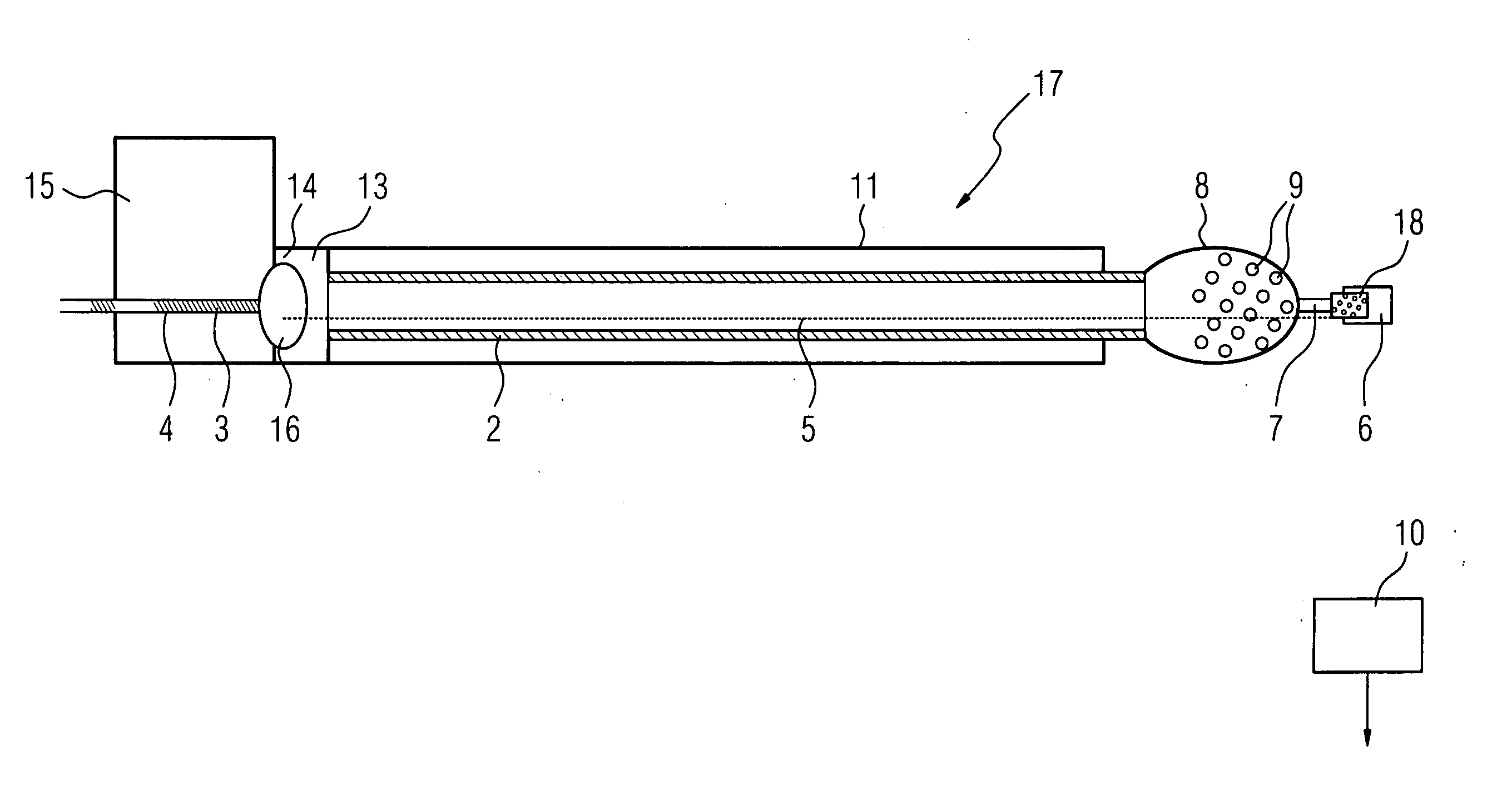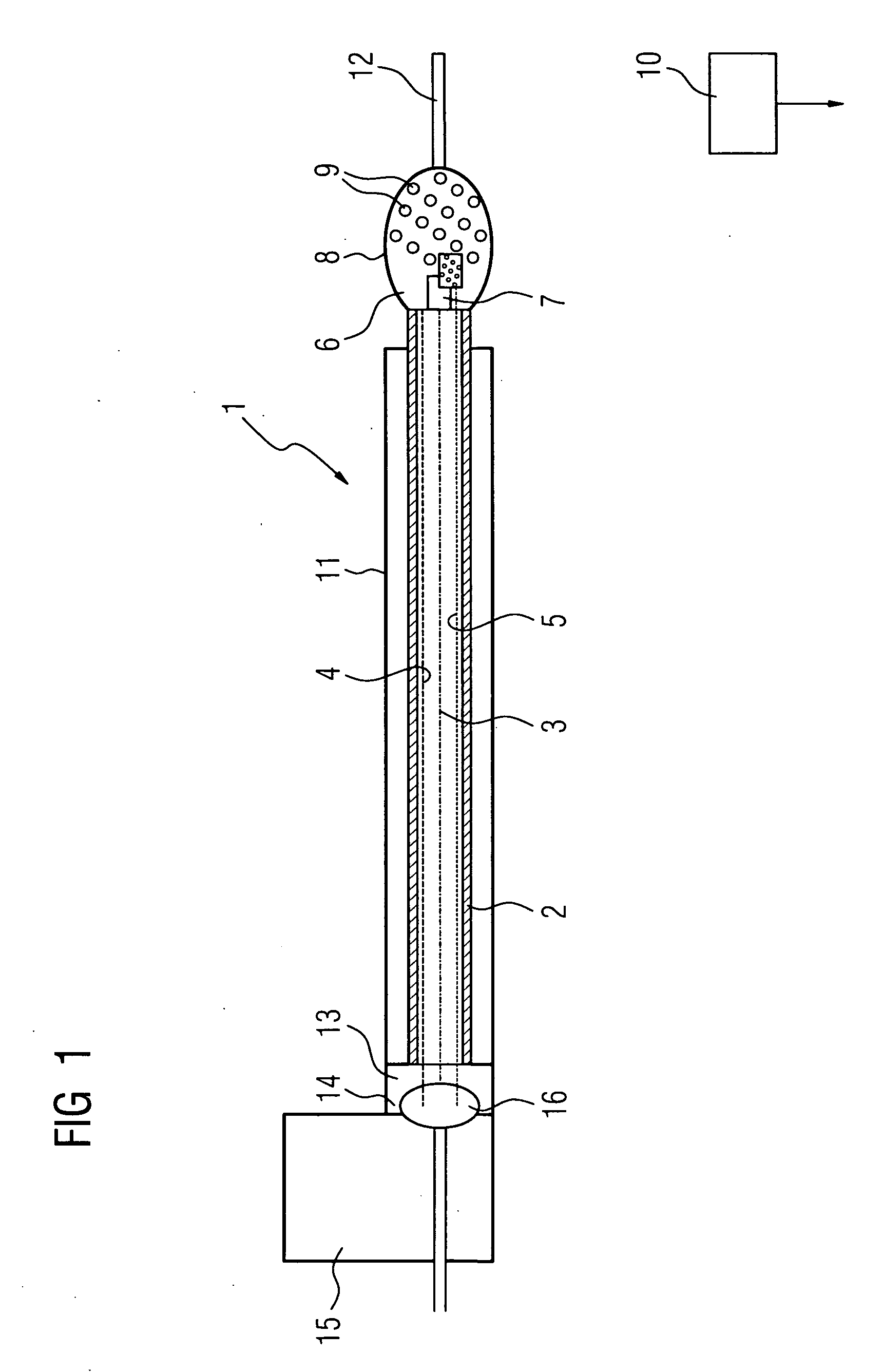Device for carrying out rotablation
a rotatable and catheter technology, applied in the field of rotatable devices, can solve the problems of no information provided about the structure of the deposit, its thickness or inflammatory processes, and the inability of medical personnel to distinguish between plaque and vessel wall, and achieve the effect of reducing the frictional resistance of the catheter
- Summary
- Abstract
- Description
- Claims
- Application Information
AI Technical Summary
Benefits of technology
Problems solved by technology
Method used
Image
Examples
Embodiment Construction
[0034]FIG. 1 shows an inventive device 1 for carrying out rotablation which comprises a rotablation catheter. The device 1 features a hollow flexible drive shaft 2, into which an OCT signal line 3 and an IVUS signal line 4 are integrated. In addition a signal line 5 for a position sensor system, which is embodied as an electromagnetic sensor system, is arranged in the flexible drive shaft 2. An IVUS sensor 6 and an OCT sensor 7 are integrated into the drill head 8. On the circumference of the olive-shaped drill head are arranged grinding and cutting particles 9, through which arteriosclerotic plaque can be removed. A light exit window for the OCT sensor 7 is located on the drill head 8. Furthermore magnetic sensors of the sensor system are arranged in the drill head 8. These sensors interoperate with a position sensor 10 which is arranged outside the body of the patient.
[0035] The drive shaft 2 is surrounded by a catheter sheath 11. A guide wire 12 is routed in the longitudinal dir...
PUM
 Login to View More
Login to View More Abstract
Description
Claims
Application Information
 Login to View More
Login to View More - R&D
- Intellectual Property
- Life Sciences
- Materials
- Tech Scout
- Unparalleled Data Quality
- Higher Quality Content
- 60% Fewer Hallucinations
Browse by: Latest US Patents, China's latest patents, Technical Efficacy Thesaurus, Application Domain, Technology Topic, Popular Technical Reports.
© 2025 PatSnap. All rights reserved.Legal|Privacy policy|Modern Slavery Act Transparency Statement|Sitemap|About US| Contact US: help@patsnap.com



